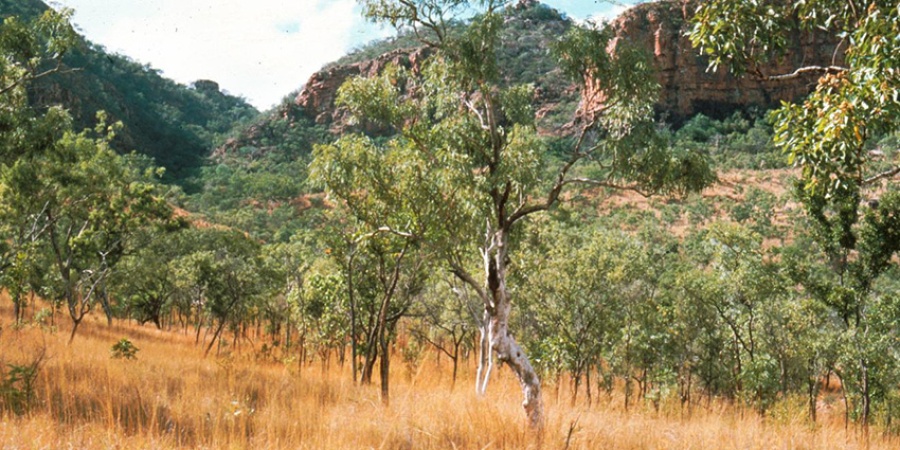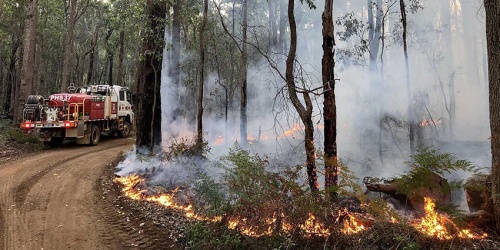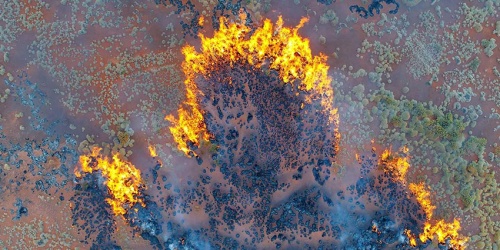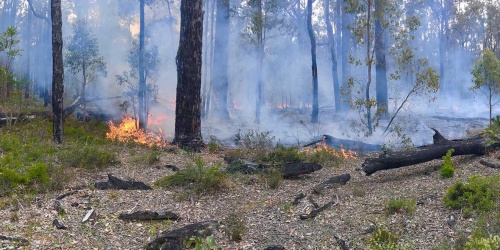
Tropical savanna on the footslopes of the King Leopold Ranges
Most plants and animals of the tropical savanna in northern Australia are fairly resilient to fire. Even high intensity fires late in the dry season (July to November) are not as destructive as they may appear. However, repeated intense fires late in the dry season can significantly reduce tree cover and can be harmful to a range of animals, particularly small and medium sized mammals.
DBCA is working collaboratively with land managers to use prescribed burning during the early dry season (May to June), when the ground vegetation is not fully dried and fire tends to be relatively low in intensity, patchy and limited in extent. These fires reduce fuel, which then limits the spread of higher intensity bushfires late in the dry season.
Fire ecology research
In 2003, DBCA initiated fire ecology research and monitoring in the Kimberley. This work included repeated mammal trapping and vegetation surveys across savanna habitats and different tenure and land management types.
In 2010, DBCA fire scientists commenced an adaptive management fire ecology research program on effects of prescribed burning in the Kimberley. Increasing prescribed burning during the early dry season produced a net positive effect on threatened mammals.
It was found that most mammal species, including iconic Kimberley species such as the northern quoll, brush-tailed rabbit-rat, Kimberley rock rats and golden-backed tree-rat, all benefited from this low intensity, patchy prescribed burning. Low intensity fire promotes tree canopy development, retention of hollow-bearing trees, retains refuges with ground-level grasses and shrubs, and promotes fruit and seed production. All these habitat features provide food resources and shelter for threatened mammals. A science information sheet, Prescribed burning benefits threatened mammals in Kimberley tropical savannas, outlines the results of this study and can be downloaded below.
Fire and Gouldian finches
The threatened Gouldian finch is found only in the tropical savannas of northern Australia. It feeds exclusively on grass seed. A collaborative research project has been undertaken on the impacts of fire regimes on key resources for the threatened Gouldian finch. An increase in the frequency, extent and intensity of fires in the region is diminishing the availability of the grass seed that the species depends on. The research emphasises the importance of fine scale patchy burning to simultaneously benefit finches through:
- provision of annual sorghum seeds in recently but infrequently burnt habitat
- low intensity fires to promote retention of larger hollow bearing trees (Gouldian finches are obligate nest hollow users) and high seed production
- providing patches of longer unburnt mature, seeding perennial grasses for Gouldian finches to persist on during the critical wet season food shortage period.
Research findings from this project can be downloaded from the National Environmental Science Programme website. Clicking this link will download a PDF.
Fire and arboreal mammals
Another fire research project is being undertaken on arboreal mammal fire ecology and conducted by Ian Radford and colleagues in Charles Darwin University in the Northern Territory (Cara Penton, Leigh-Ann Woolley, Brett Murphy). The most important finding from this work (yet to be published) is that even though arboreal mammals including tree rats (Conilurus penicillatus and Mesembriomys gouldii) and possums (brush tailed possum and savanna glider) depend on and share tree hollows, their abundance across savannas seems to be more strongly influenced by ground and shrub layer structure and/or threatening processes rather than arboreal habitat features (hollow density, coarse woody debris or density of large trees).


